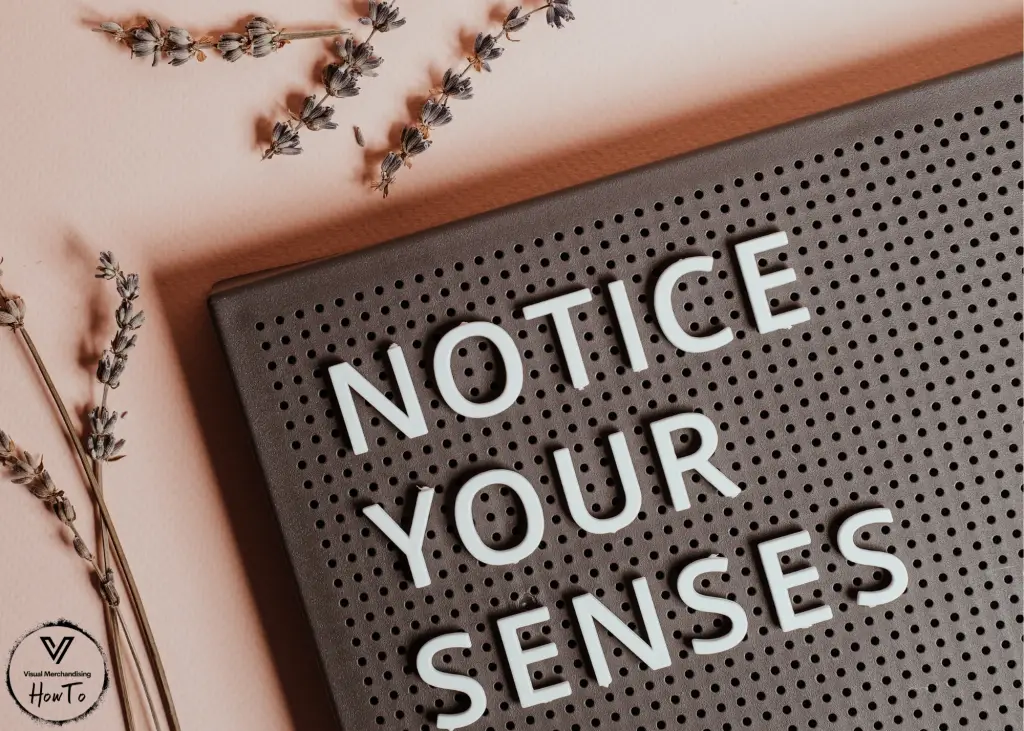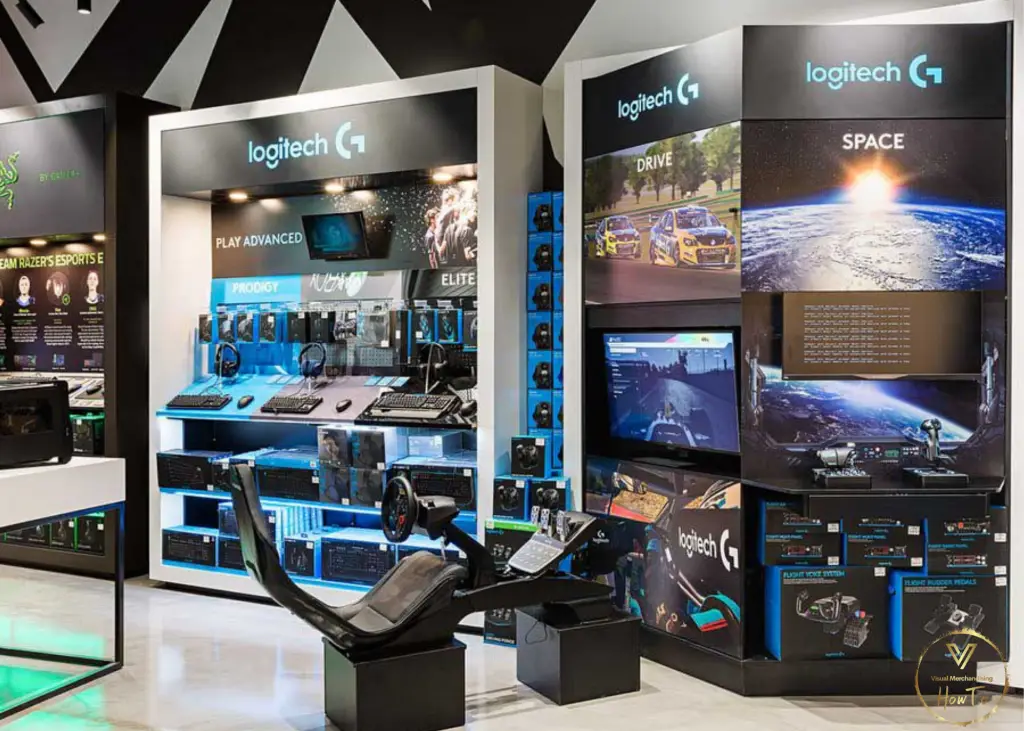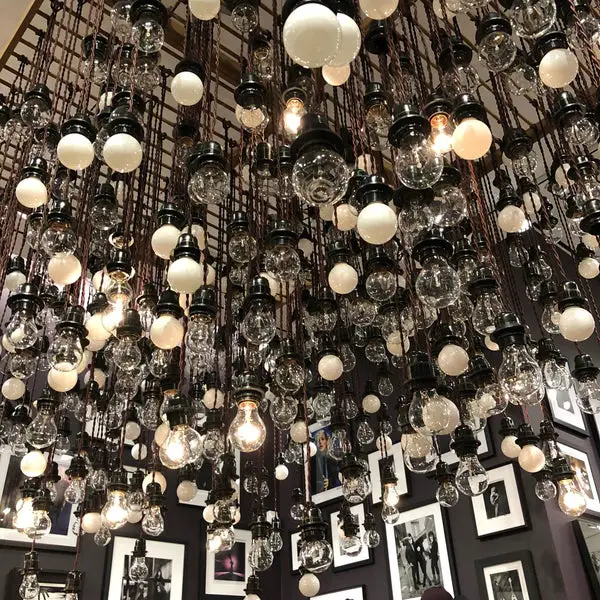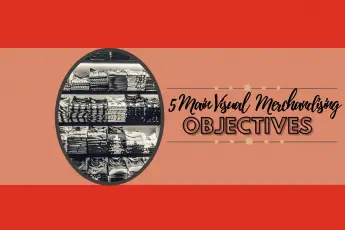6 Elements of Visual Merchandising
Is visual merchandising just jargon or will it actually give you a competitive edge? If you execute your merchandising plan correctly it most definitely will! Visual merchandising will improve your customer’s experience and engagement and ultimately raise your revenue and drive your brand!
What is Visual Merchandising
Raising the aesthetic appeal of a particular product in a store or the store in its entirety to invoke customer interest and product sales.
This is done through interactive displays, shelving layouts, signage, store layout and also storytelling displays. With e-commerce on the rise, retailers have to up their game in order to attract and retain customers. Providing a cohesive brand identity amongst brick and mortar stores as well as online retailers ensures repeat customers and sales within the company. It is the key component for any business since 75% of customer decisions are made in stores with the help of merchandising. Merchandising plays a significant part in driving consumer impulse purchasing behavior which in turn increases a businesses overall sales.
Principles of Visual Merchandising
It is vital to follow the following principles of visual merchandising if you are to realize the true impact.
The principles of visual merchandising are guidelines that retailers use to create visually appealing displays and layouts that attract customers and increase sales. Here are some of the key principles:
- Balance: A well-balanced display creates a sense of harmony and symmetry. It can be achieved by using an equal distribution of items or by creating a focal point.
- Proportion: Proportion refers to the size and scale of the items in a display. It’s important to ensure that the items are appropriately sized and arranged to create a cohesive look.
- Contrast: Contrast refers to the use of opposing elements, such as light and dark colors or rough and smooth textures, to create visual interest and draw the eye.
- Color: Color is an important tool in visual merchandising. It can be used to create a mood or atmosphere and to draw attention to specific items.
- Repetition: Repetition of patterns or colors can create a cohesive and unified look in a display.
- Unity: Unity refers to the overall theme or concept of a display. All of the elements should work together to create a cohesive and visually appealing display.
- Emphasis: Emphasis refers to the use of a focal point or key item in a display to draw the eye and create visual interest.
- Space: The use of space is important in visual merchandising. The right amount of space between items can create a sense of balance and harmony in a display.
- Lighting: Lighting can be used to create a mood or atmosphere and to draw attention to specific items in a display.
- Movement: Movement refers to the use of dynamic or changing elements in a display to create visual interest and draw the eye.
Along with these principles there are other ways in which to create a visually appealing store for customers.
Consumer-oriented design
To optimize the store to give the customer the ultimate shopping experience which in turn will increase. Having said that, it is vital to understand your customers. To do so you will need to understand who your actual target market is. Once established it will allow you to communicate the value proposition and benefits of the brand in an appealing way. Visual merchandising should also be able to help you understand the psychology behind consumers and their purchasing habits.
Customer-oriented design in visual merchandising is the practice of creating a store design and product displays that are centered around the needs and preferences of the target customer. This involves analyzing customer behavior, understanding their buying patterns and preferences, and designing store layouts and displays that appeal to them. The goal is to create an environment that enhances the shopping experience for customers and encourages them to make purchases. Customer-oriented design considers factors such as product placement, lighting, color, texture, and signage to create an inviting and engaging shopping environment that resonates with customers.

Leverage your brand
Represents the brand identity and belief system of your business and relays that to your customer in a cohesive way.
Either online or a physical store, it is where customers have the advantage of fully interacting and engaging with your brand. Plan your merchandising strategy to state the brand position and brand’s assets. In doing that you will be providing the ultimate customer experience. For example, if you are a sports brand, your strategy should be able to invoke the feeling of being an athlete from the customer.
Dick’s Sporting Good’s for example, has taken their branding and customer experience to a whole other level. They are experimenting with the try and buy concept of retail. Building their own track and field outside of their store; so customers can try their cleats, running shoes etc on a track or turf field. If that is not your cup of tea they also have a rock climbing wall and a golfing experience located within the store. This form of interactive experience for their customers is a part of Dick’s Sporting Good’s brand identity which they have shown by maintaining their customer relationships and listening to their target market as to what it is they want to see within their stores.
Consider all senses
What immediately jumps to mind when you talk about visual merchandising is the ‘visual’ engagement of the customers and you will quickly realize this once you walk to various stores. However, human beings have more than just one sense. When the five senses have already been correctly used, you can give the customers the best shopping experience in your store.

The type of music you play can influence the mood of the customers. Also, it can quickly speak to the target market that your brand should attract. The sense of taste and smell can influence human automatic behavior. These two senses are the path to bringing out emotions and trigger certain memory structures. Nike made note that by adding scent to their retail experience there was more customer engagement and an increase of sales by 80%.
Finally, the sense of touch is just an additional sensory layer you need to remember. You can do so by allowing customers to try a product which in turn will drive more sales and brand recognition upon wearing or showcasing the product they touched
Other than sight, your visual merchandising strategy should be able to engage the all five senses for a wholesome experience.
Make use of interactive experiences
Customer engagement is becoming a crucial point in modern visual merchandising strategies. Technology is making it possible for brands to come up with ways of getting real-time customer feedback making them stand out from their competition. Artificial intelligence as part of visual merchandising is a good way of driving sales. For instance, AI can play a critical part in advising customers on what products are ideal for them depending on the parameters they will have fed into the system. Interactive experiences give room for individual customer attention. So whether the customers buy or not, a good interactive experience will give them the best experience and will leave an impression in their mind.

Execution
When it comes to visual merchandising, strategy and execution go hand in hand. If the execution of a display is not part of the design process your display will not portray your store in the manner that you want for your customer. This will in turn cause confusion in the understanding of your brand message and identity. Ultimately, in order for you retail business to benefit from visual merchandising your execution must be on point and mesh with your brand identity.
In the process of execution be sure to utilize at least one of the following types of display in visual merchandising. They are slat wall, grid wall, table display, POP display, and a pegboard. These types of visual merchandising displays convey various different types of purchasing methods for the customer which in turn can lead to an increase in sales by your target market.
Elements of Visual Merchandising
In order to reap the full benefits of visual merchandising there are certain visual elements that you will want to take advantage of. These elements help in the visual design of the environment to make it more appealing and attractive to the customers. We will briefly go over four elements of visual merchandising however there is no limit to just the four color, lighting, signage, and window display. Texture, proportion, line, shape, landscape and communication are other elements of visual merchandising can be seen in the following article.
4 Elements of Visual merchandising
Color
Believe it or not, color is the biggest motivator when shopping. In fact, customers choose color before looking at other factors like size or even price. Proper selection of colors is vital since they have a psychological connection to the human brain. Different colors evoke different moods for different people. For example, bright colors such as red and orange grab the attention of your audience. On the other hand, luxury brands prefer gold and dull colors to show sophistication and uniqueness. Color is the most important element in visual merchandising, therefore, focusing on the right choice of color will do your business a lot of good.
Lighting
Proper lighting is another important element of visual merchandising. What lighting does, is to make the colors pop hence making the entire store more appealing to customers.
Lighting brings life to colors and simple techniques like illuminating strategic places could dramatically increase sales exponentially. Go ahead, be creative, experiment with different types of lights to influence the ambiance. Use accent lights when advertising new products to get the attention of customers. However be careful with how you use the light, too much light is uncomfortable to customers and insufficient light will prevent customers from comparing different products which could reduce sales.

Signage
Signage plays an important role in shaping the customer’s perspective and experience in any store. Signage is an integral part of the retail store environment. Due to competition, businesses introduce themselves and services or products they offer, and this is done through signage.
Technology has influenced the signage businesses use. The use of screens and digital elements to convey a message to the consumer has become the norm for businesses. With the aide of few screens in your retail store your customer will be able to access promotions, new merchandise information and the ability for the customer to check themselves out.
The use of digital displays is vital to visual merchandising since a picture lasts longer in the minds of customers which will in turn mean sales for your business.
This goes a long way in retaining existing and new customers.
Window display
The first point of interaction for any business with their customers is through their window displays. The window display must represent the store in the best way possible. The display must entice the customers to go into the store and make a purchase. When it comes to window displays make sure to follow one of the following types of window displays:
- Closed Window Display
- Open Back Window Display
- Semi-Closed Window Display
- Open Window Display
- Shadow Box Window Display
- Corner Window Display
- Island Window Display
- Elevated Window Display
If you want to read more, the information is downloadable as elements of visual merchandising pdf, elements of visual merchandising SlideShare, and elements of visual merchandising ppt.
Frequently Asked Questions
Q: What are the 4 elements of visual merchandising?
A: The four main elements of visual merchandising are: color, lighting, signage, and window display. However there are others such as landscape, storytelling that also classify as main elements of visual merchandising.
Q: What are the types of visual merchandising?
A: There are essentially two types of visual merchandising: Exterior and Interior visual merchandising.
Q: What are the 5 key principles of visual merchandising?
A: The 5 principles of visual merchandising include:
- Consumer-oriented design
- Leverage on brand
- Consider all senses
- Make use of interactive experiences
- Execution
These five principles may also known as store layout, digital, signage, merchandising, and display. Along with these five principles there are also visual merchandising and display principles of visual merchandising. These display principles are balance, composition, dominance, harmony, rhythm, repetition, and the rule of three.
Take Away
To sum it up, visual merchandising is an art that should put the merchandise in focus. The overall experience for customers can have an overall affect on customers either positive or negative. That is why coming up with designs specifically for your target audience, hitting sensory cues, proper execution and interactive experiences is key to creating a successful window display of any business.
Once you master this concept, then you will be able to manipulate the interior and exterior of your store to give your customers the ultimate shopping experience that will keep as repeat customers with friends who will be referrals.





